Both goats and cows are popular features on many homesteads across the globe. Bred for meat and dairy, both have value.
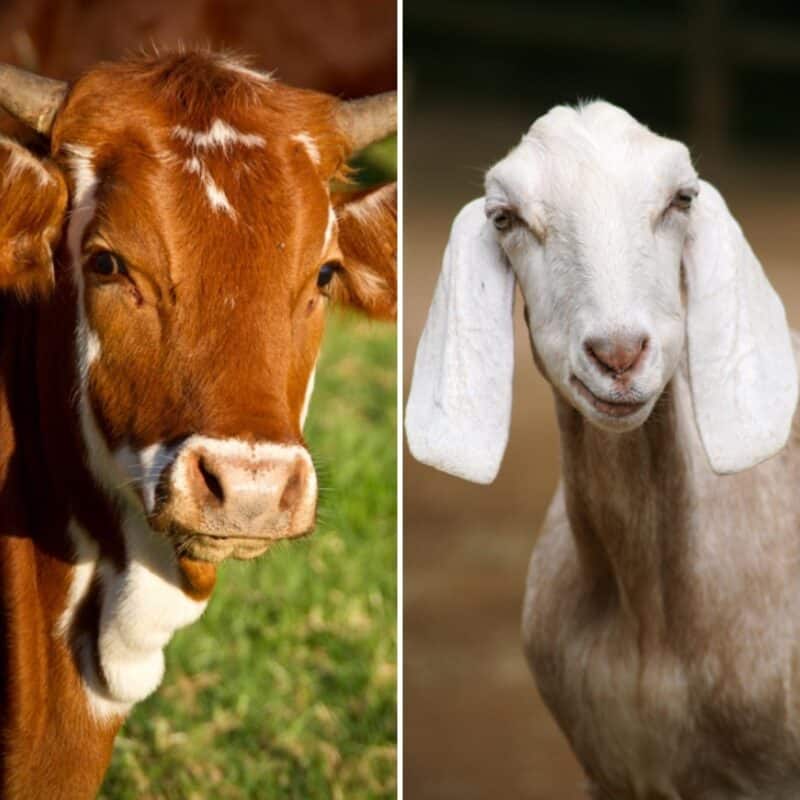
But if you’re trying to pick one, which one is right for you? Should you raise goats or should you raise cows?
While goats take up less space, they are much harder to contain than cows. Cows produce a larger meat yield than goats, and their milk tastes better. Goats are easier to handle than cows and cheaper to buy and raise.
Here’s a quick table where I outline the main differences to help you decide…
| Feature | Goats | Cows |
|---|---|---|
| Size | Smaller | Larger |
| Average weight | ✅ 125 lbs. (60 kgs) | ❌ 2,500 lbs. (1,100 kgs) |
| Butchering | ✅ easier | ❌ harder |
| Milk production | ❌ lower yield | ✅ higher yield |
| Breeding | ✅ easier | ❌ harder |
| Space requirement | ✅ need less space | ❌ need more space |
| Handling | ✅ safer | ❌ less safe |
| Pasture requirements | ✅ need less | ❌ need more |
| Free-ranging | ❌ harder, as they are very curious and have a lot of energy | ✅ easier, they’re more mellow |
In addition…
- Many people prefer the taste of cow’s milk.
- While a bull can kill, a buck will just leave you with a bruised body and bruised ego.
- Goats’ milk is richer and creamier than cow’s milk.
- Goat milk is more nutritious than cow’s milk.
- Goats eat almost everything; you will need to buy less feed for goats than cows.
Of course, personal preference also plays a large role in deciding which is better suited to your needs…
To help you decide, this article will help you understand the pros and cons of raising goats and raising cows.
Pros of Raising Goats
- Goats depending on the breed, age, and whether or not the goats are registered will cost less than cows
- Goats eat a wider variety of plants, they will not need a lot of feed, hay, or grass to thrive
- Goats require very little space in paddocks or in barns
- Goats are easy and relatively safe to handle
- If you only require small amounts of milk, a goat is better suited than a cow
- Goat milk is sweet and creamy
- It is easy to breed – or manage breeding – with goats
- Goats eat weeds, shrubs, bushes, and even poison ivy, they are very proficient at controlling undesirable plants and weeds
- Goats defecate less and therefore attract fewer pests
- Produce quality manure
- Produce fiber
- Can be very playful
- Great entertainment
- Cost between $75 to $7,500 depending on the breed
Cons of Raising Goats
- Goats are notoriously hard to pen in, simple fencing will be as easy for them to escape from as it is easy for you to walk through an open door
- They give less milk than cows
- Separating cream from the milk is not easy
- Milk is homogenized
Pros of Raising Cows
- Fencing in cows is easy
- Cows produce lots of milk
- Excess cow’s milk can be fed to other livestock
- It is easy to separate cream as the cream rises
- Cow’s milk tastes great
- Produce a large yield of meat
- Milk is non-homogenized
- Cows are mellow and relaxed
Cons of Raising Cows
- Moving cows requires large trucks or trailers
- Cows can cost $1,000 to $3,000
- Cows eat more than goats and cannot stomach all plant material
- Cows require a lot of pasture and barn space
- Breeding can be complicated and expensive
- You may end up with way more milk than you need
- Cows produce high levels of methane emissions which affect climate change
- Cows defecate more making flies, worms, and other parasite infestations as well as diseases more dangerous
Which is Easier to Handle, a Cow or a Goat?
You don’t have to be Einstein to figure out that in a confrontational situation an argument with a goat will be infinitely less painful than with a cow.
I’m not saying that being head-butted or run over by a goat is not going to hurt, far from it, a goat can also hurt you (less than your ego anyway), but it probably won’t kill you.
Being able to handle your livestock is very important for day-to-day activities such as milking, vaccinations, health checks, moving from location to location, and breeding.
If you have young children, they are much less likely to feel intimidated by a goat than by a cow. Injuries sustained by a cow are going to be devastating for a child, they could even be life-threatening.
However, when up against a frisky goat, your child might get hurt, might get bruised, might feel shocked, and probably even a little scared. Their overall safety with a goat or herd of goats is far higher than with a cow or herd of cows.
If you are planning for a dairy animal, please remember that it is easier to train a goat for milking than it is to train a cow.
Cows kick and shift their weight, and can easily knock you over while you are trying to milk them. Goats do also kick, but they settle into a milking routine much faster than cows do.
If you are lucky enough to purchase a cow that has already been trained for milking and being handled, they can be absolutely delightful as companion animals and even pets.
If you need to move your cows or goats from one location to another, cows will be easier to herd. Once you get a few cows in front to start moving the others will quickly follow.
Goats are a whole other animal! Herding 5 goats can be like herding 30 children. They are easily distracted and will jump in trees, or jump over streams or fences.
If your cows do decide to go out on a road trip without your consent, they can also be hard to shepherd back into their fields where you want them. They tend to stay together and that makes them easier to manage.
Which is More Affordable, a Goat or a Cow?
The good layout for purchasing a goat or cow is significantly different. While goats can be purchased for $50 to $300, a cow can set you back for anywhere between $1000 and $3000.
Moving goats to show, purchase, or sell, move from home to home, or take them to an abattoir does not require specialized trailers or trucks. Because they are small it is easy to fit more goats onto a trailer than cows, and they can easily be transported in the back of a truck even.
Moving cows requires the use of a large heavy-duty trailer because of their size and weight.
A cow stanchion for milking and a chute for veterinary work both are more expensive because they have to be constructed with heavy-duty metal. Because of the cost, it is not practical if you only have a couple of cows.
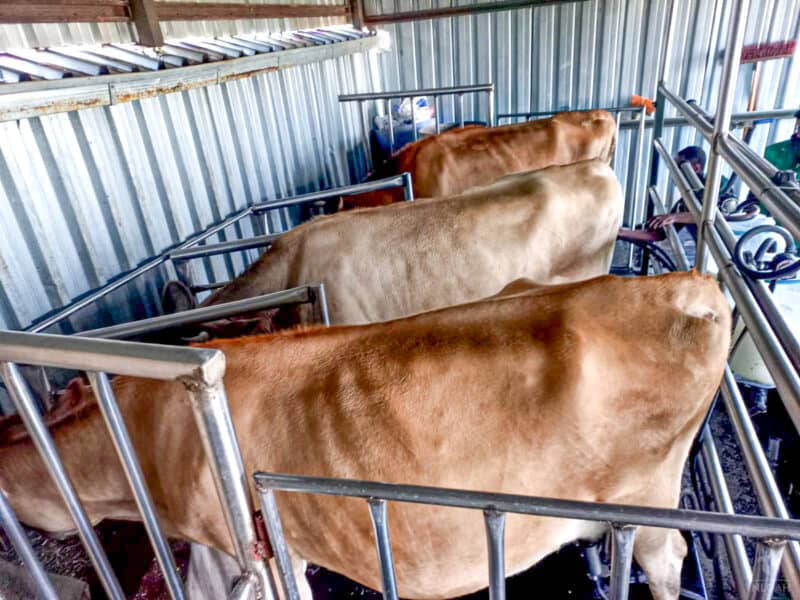
A milking station for goats can be constructed with lumber and is, therefore, cheaper and easier to put together than a cow’s milking station.
Cows eat much more than goats and need at least one acre per cow. One acre is plenty for between 6 to 8 goats.
If you do not have enough acreage, you have to buy a large amount of hay to make up for the lack of grazing.
If you have a cow for dairy in your home, they will also need alfalfa to produce an adequate amount of good quality milk.
The size and the amount of fecal matter they produce, cows will need much more bedding than goat will.
Which is Better, Cow’s Milk or Goat’s Milk?
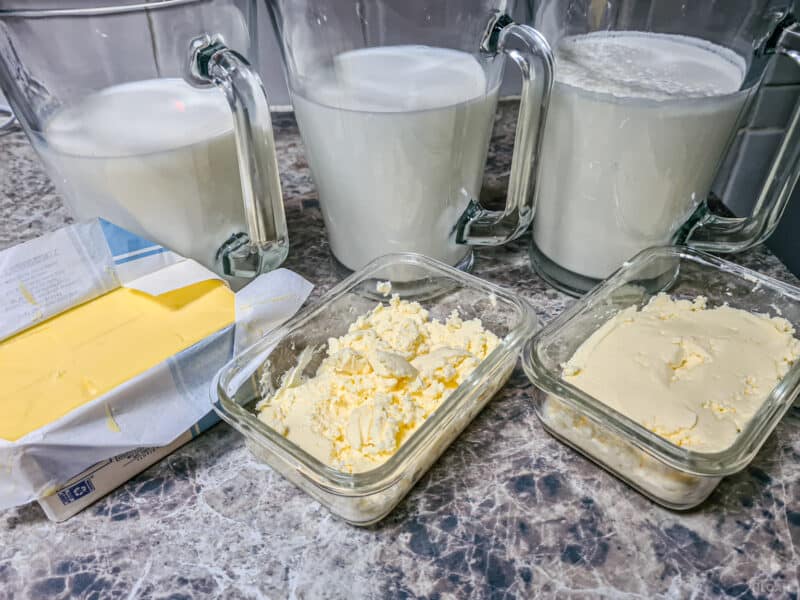
Because most people are raised with cow’s milk, suddenly switching to goat’s milk may be quite off-putting. However, just as is the case for cows, the taste of goat’s milk will depend largely on the type of food they are getting.
Obviously, a cow will provide significantly more milk than a goat will. It is also easier to separate the cream from cows’ milk than from goats’ milk meaning you’ll be able to make butter, cheese, and yogurt in larger quantities using cow’s milk.
The bad taste of goat’s milk can also be the result of harmless skin bacteria that ends up in the milk if the teats have not been properly cleaned before milking.
An unpleasant taste can also be the result of mineral deficiencies. This is also true for cow’s milk.
Proper hygiene, quality feed, a clean milking bucket, and preparation for milking will all affect the quality and taste of both cow’s milk and goat’s milk.
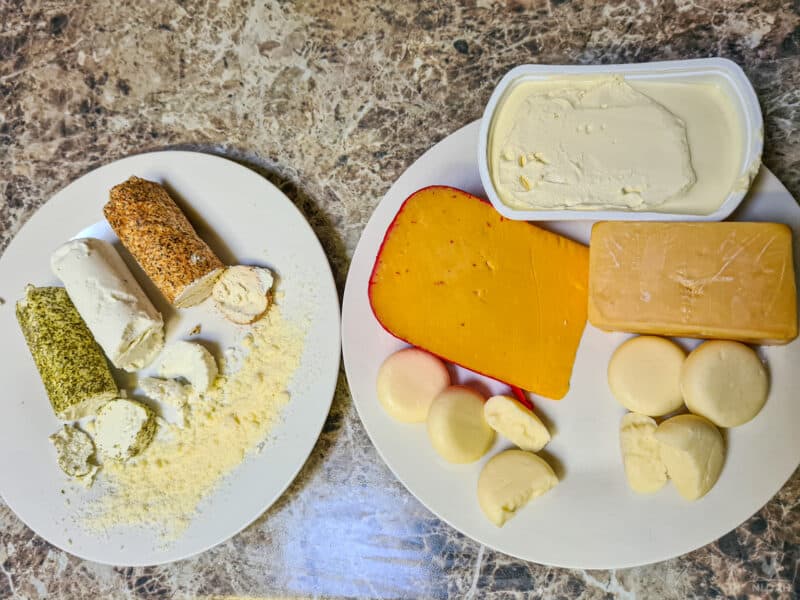
If your milk has bacteria in it, pasteurization will not remove the bad taste from the milk. Pasteurization does not eliminate bacteria from the milk, it just kills the bacteria that are present so that they are not harmful to ingest.
To prevent bacteria from entering your milk, first thoroughly clean your cow or goat’s teats, then squirt the first bit of milk onto the floor to remove any bacteria that remain on the tip of the teat, and then begin milking into your bucket.
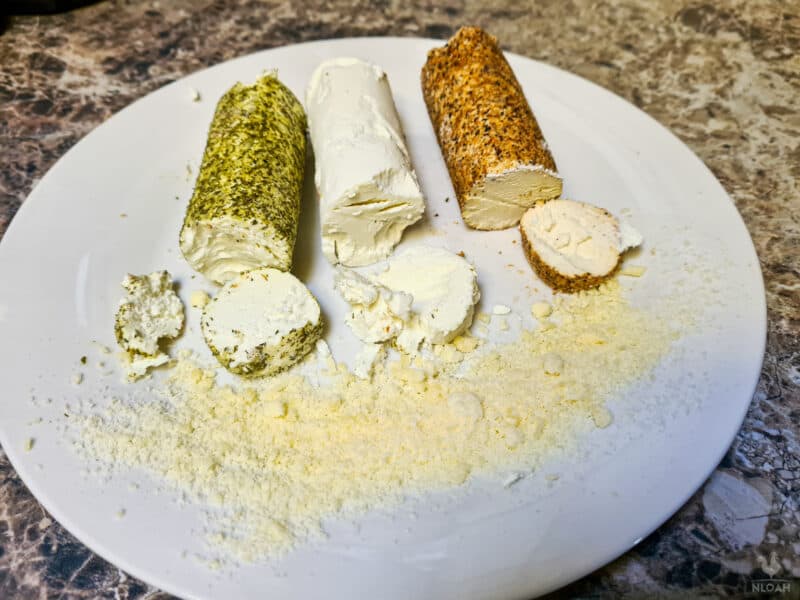
The taste of goat’s milk can also be influenced by the presence of a buck that is in with the doe’s.
Bucks often urinate on the doe’s when breeding and rub their heads on the doe’s udder and across the rest of the doe’s body. This can spread bacteria and the urine can cause a significantly sour taste to the milk.
To make cheese you need milk, to make butter you need cream, to ‘make’ cream you need milk; the ability to separate out the cream from milk is often reliant on a process called homogenization.
Most store-bought cow’s milk has been both pasteurized and homogenized.
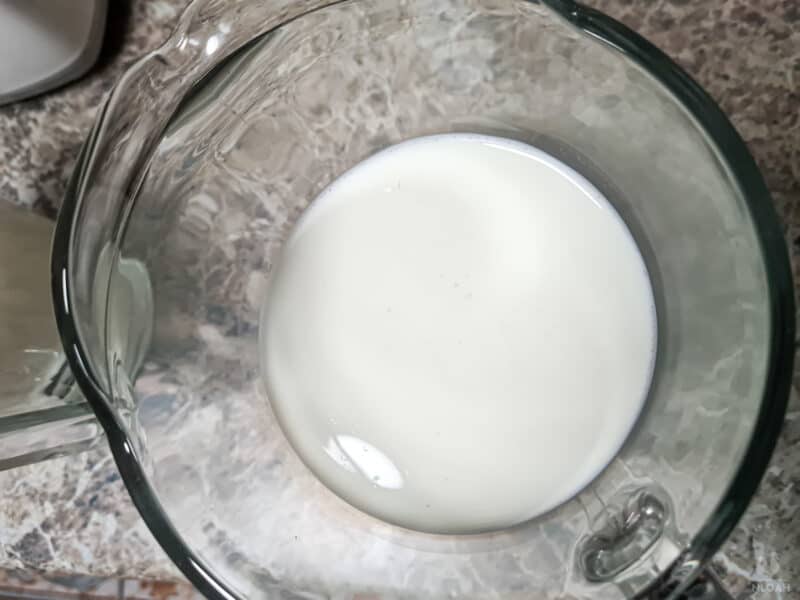
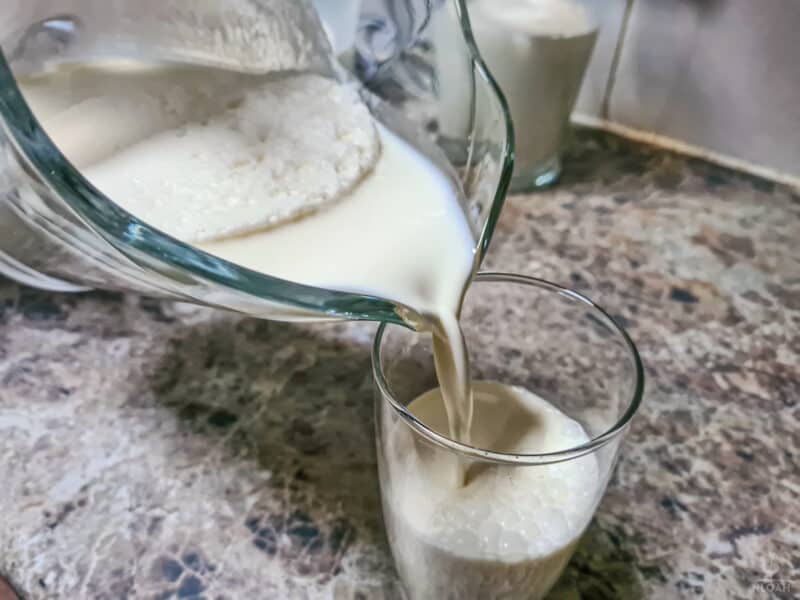
So, what is homogenization? Homogenization occurs when milk is passed through a high-pressure pump that makes fat molecules in the milk smaller.
Homogenizing milk helps prevent the separation process that occurs in whole milk. In other words, it stops the cream from rising to the top of your bottle of milk. Store bought milk is homogenized.
There are often differing points of view on whether goats’ milk is homogenized or not.
The reason for this is that goat’s milk is not put through the high-pressure pump to homogenize it. This is because goats’ milk is naturally homogenized.
Store bought milk is homogenized after the harvesting of most of its cream, this ensures the dairy farmer has a good supply of cream to sell, make yogurt, and make butter to sell.
Because goats’ milk is naturally homogenized, the cream doesn’t readily rise to the surface of the milk.
For the cream to rise, the milk will have to be left for three to four days so that the cream can separate.
The need to store the goat’s milk for this time is the reason why goat’s milk products are so expensive in stores.
If you’re farming or homesteading with your own cows for your household and to sell, your milk will be non-homogenized, in other words, the cream will rise to the top of the milk and be visible as a layer on top of the milk.
Homogenized milk will stay fresh for longer, will be easier to digest, will improve the taste and color, and make the milk more versatile for cooking and baking.
On the flip-side, because the fat cells have been broken down into such small particles these fat particles are easily absorbed into the bloodstream making them more likely to cause health issues, homogenization also reduces the nutritional value of milk.
Dairy Pros and Cons
PROS
| Cows | Goats |
|---|---|
| A valuable source of protein, calcium, vitamin D, phosphorus, vitamin B12, iodine, and magnesium | A valuable source of calories, protein, calcium, potassium, phosphorous, magnesium, vitamin A, and fat |
| Helps develop strong bones | Thick and creamy |
| Assists muscles to function | Easy to digest |
| Contains whey and casein which lowers blood pressure | Reduced risk of food allergies |
| Rich, creamy taste | Improved cardiac health |
| Complete meal | Lowers cholesterol |
| Supplies strength to the building blocks of cells | Prevents osteoporosis |
| Strengthens immune system | Prevents osteoarthritis |
| Repairs damaged cells and tissues | |
| Prevents osteoporosis | |
| Prevents osteoarthritis |
CONS
| Cows | Goats |
|---|---|
| Not lactose-free | Not lactose-free |
| Contains saturated fat | High calories can lead to weight gain |
| Can lead to obesity | Can cause digestive problems |
| Elevated cholesterol | |
| Linked to many cancers | |
| Linked to food allergies | |
| Store-bought milk contains antibiotics and synthetic hormones | |
| Can cause digestive problems |
The Difference Between Bulls and Bucks
Let’s start with the easy differentiation for the sake of newcomers into the homesteading world. A bull is a male member of the cattle species. A buck is a male goat.
If you are raising cows or goats for dairy, both would need to give birth and produce milk for their babies.
If you do not want to make use of artificial insemination, you would need 1 bull with 20 to 30 cows or 1 buck with 30 to 40 doe’s.
If you do not want to keep bulls or bucks, and you choose to go the artificial insemination route rather, you will need more equipment and the help of either a vet or someone who knows what they are doing to impregnate your cows or doe’s.
Many people choose to go with artificial insemination because it is easier than keeping a bull or a buck on their property.
In particular, bulls can be very testy and therefore very dangerous. A buck can also harm you, but you are likely going to be offended more by the smell than by the bruises left behind by a buck.
Raising Cattle or Goats for Meat
While beef is part of many western households’ food supply, goat meat is very popular in the Middle East, Mexico, and the Caribbean islands. Goat meat is very tasty and can be used – amongst other dishes – to make a really good curry.
Obviously, cattle that are bred for meat are significantly larger than goats. This means that you will need stronger hanging hooks, more heavy-duty equipment, and much more freezer space.
When butchering a cow or bull you can expect a hanging weight of 300 to 600 pounds or more. If you are butchering a goat, you can expect a hanging weight of 30 to 100 pounds.
However, if you’re hoping to make a little extra money on the side, you will get more meat to sell from a cow than from a goat.
Conclusion
Deciding to raise goats or cows is very much a case of personal taste. While cows produce more milk than goats, goats’ milk has a higher nutritional value, is creamier, and stays fresh for longer.
Additionally, goats provide a more manageable quantity of meat than cows. Cows produce more milk and meat than goats.
Cows’ meat and milk are very popular in western countries. Statistics have shown that 65% of all meat consumed by humans is goat, not cattle. This is largely due to the space and feed needed to raise goats than cattle.
I love to hear about the goofy antics of goats. Please brighten everyone’s day by sharing the funny stories of your goats and cows in the comments below.
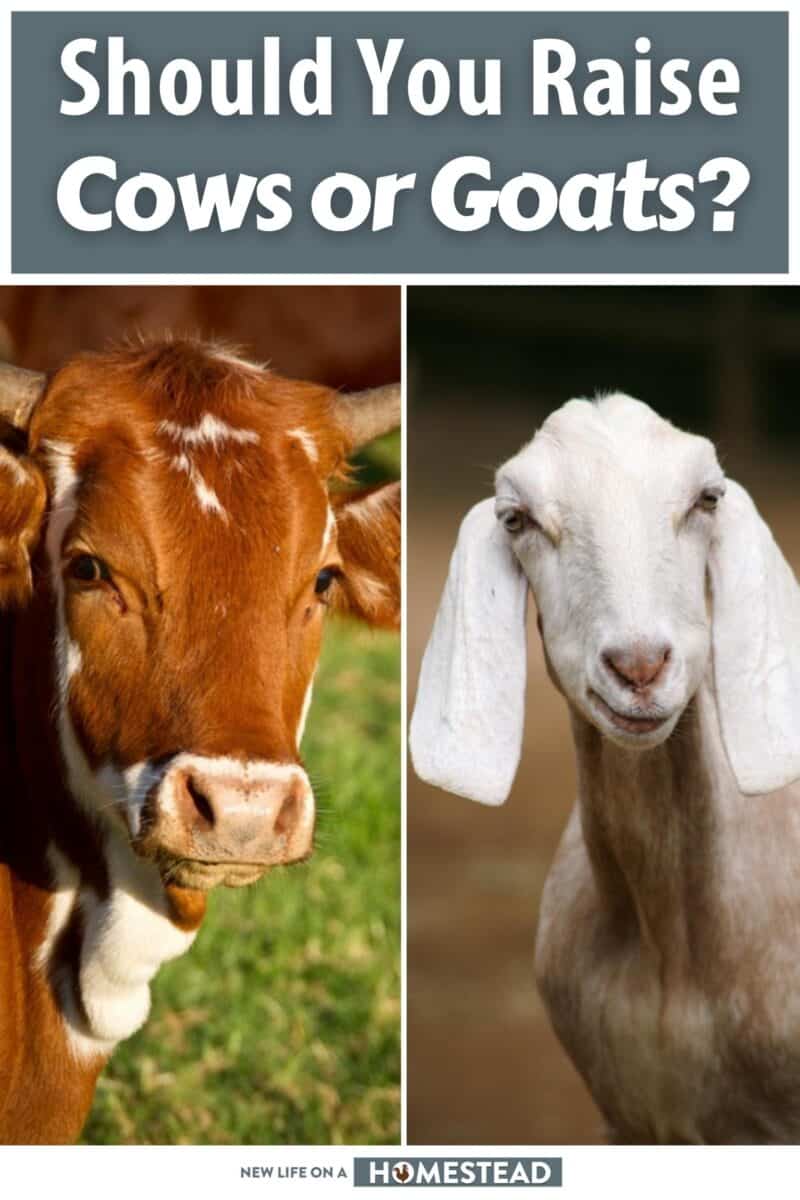

Di-Anne has been living on a farm her entire life. She has a gorgeous garden, and also tends to livestock big and small. She’s not raising her three children with the self-sufficient mindset.
